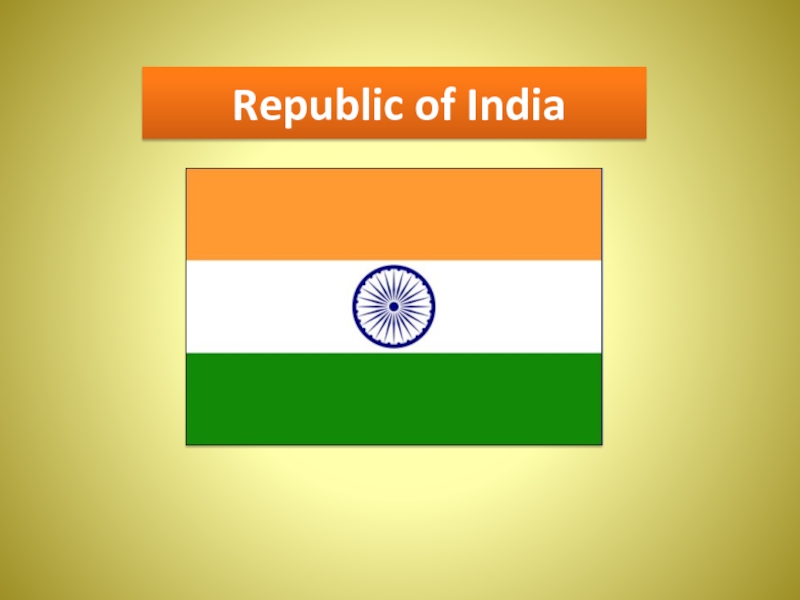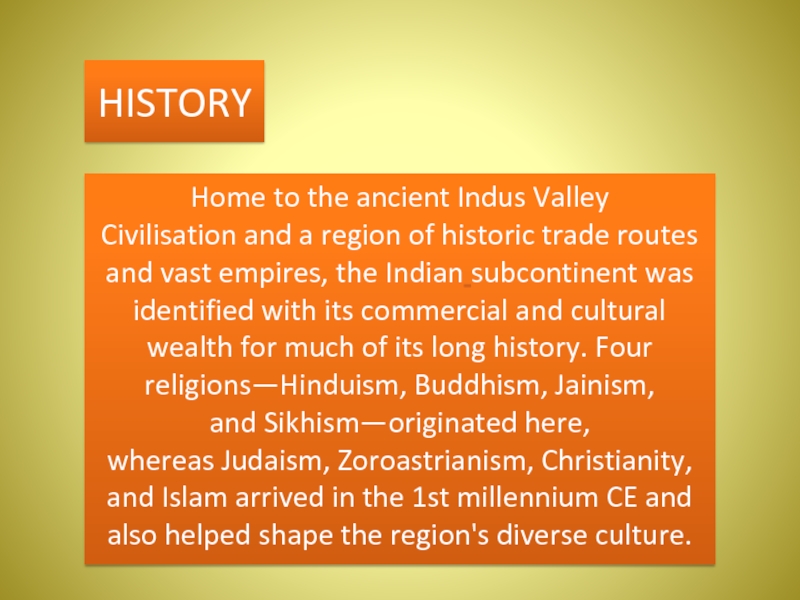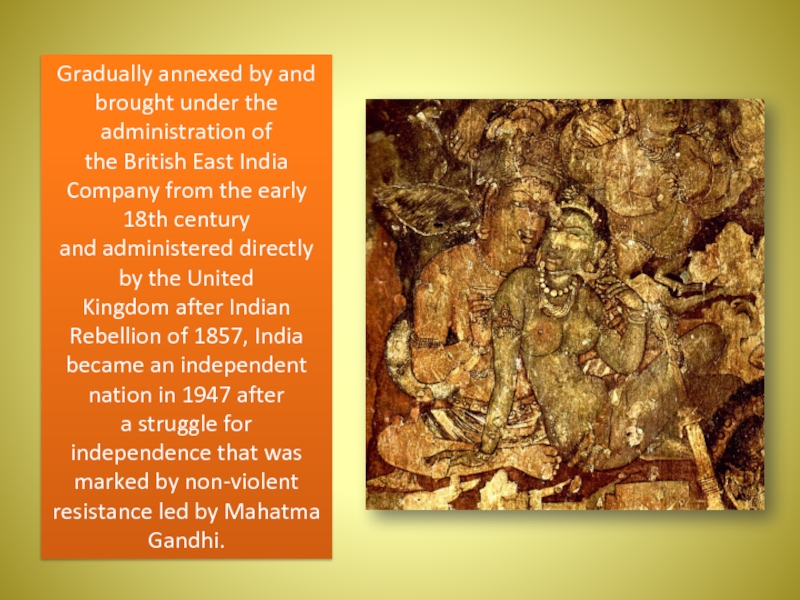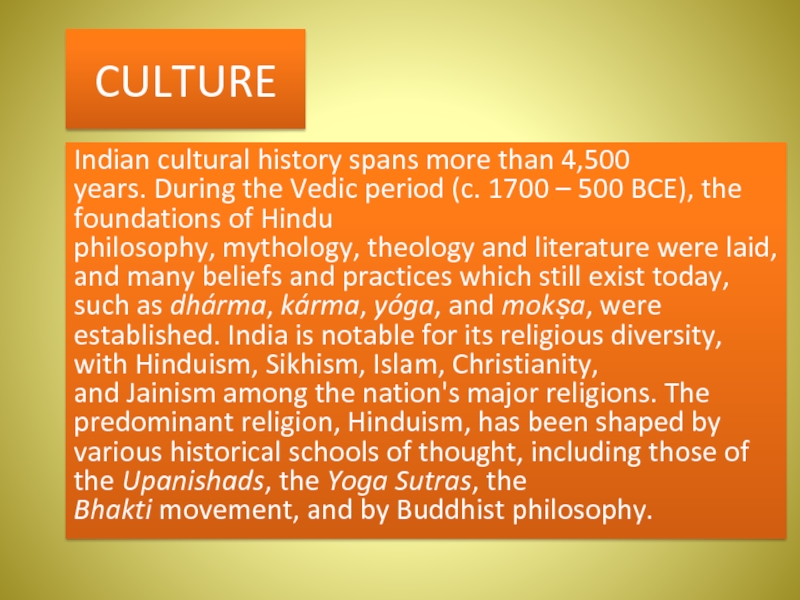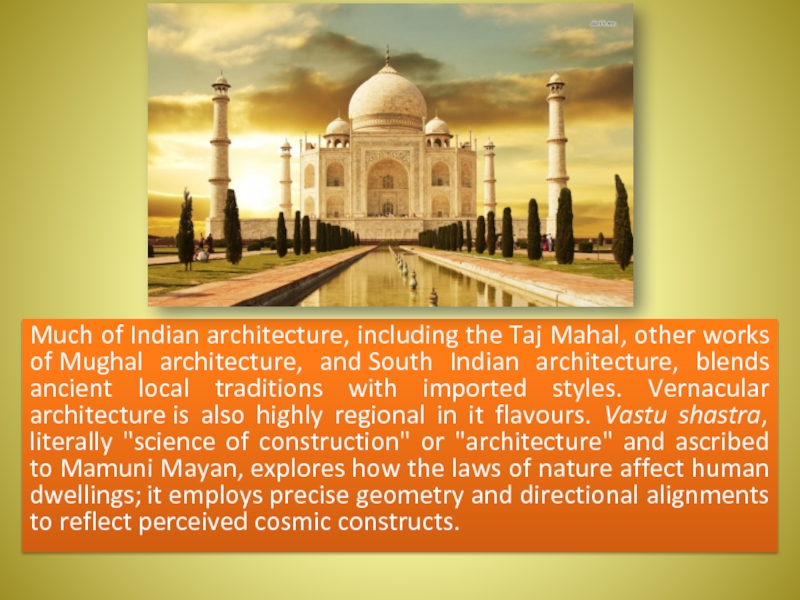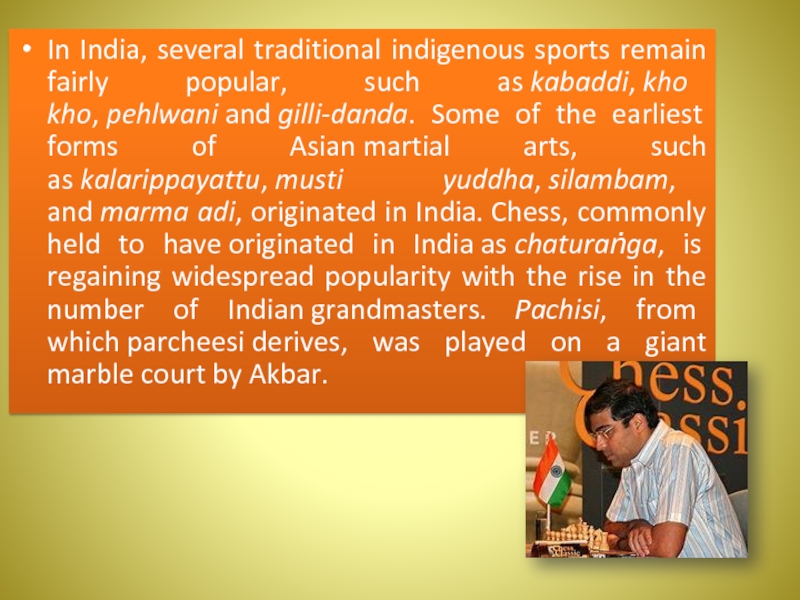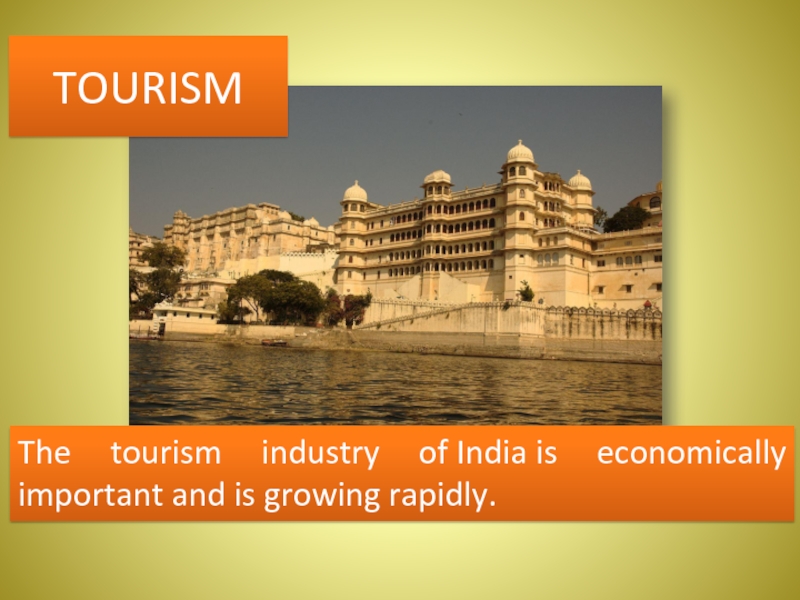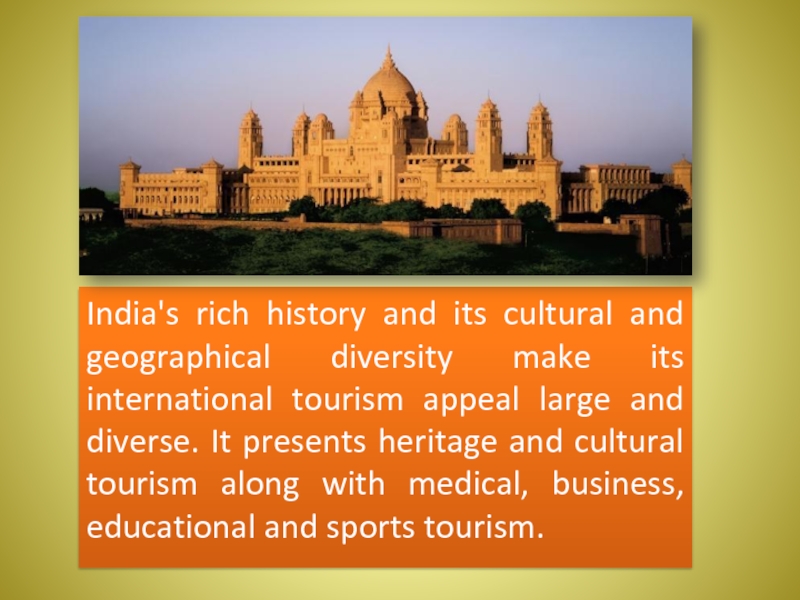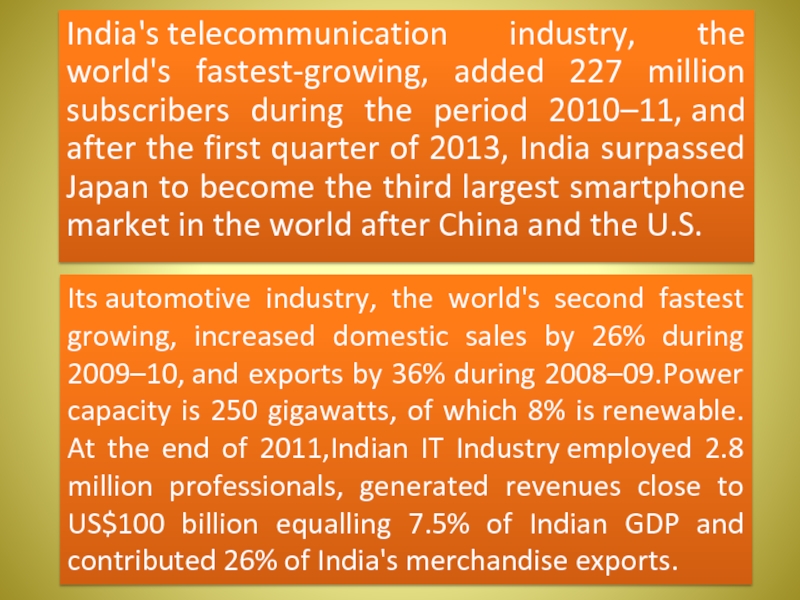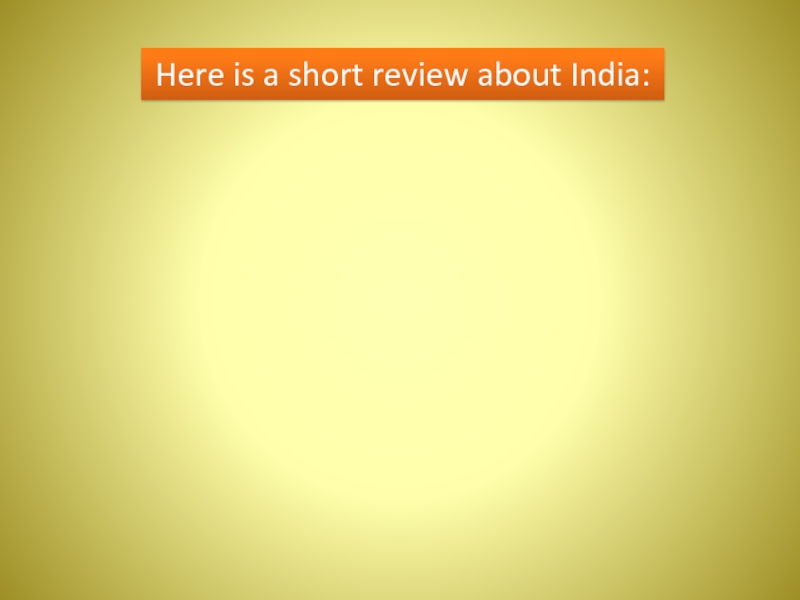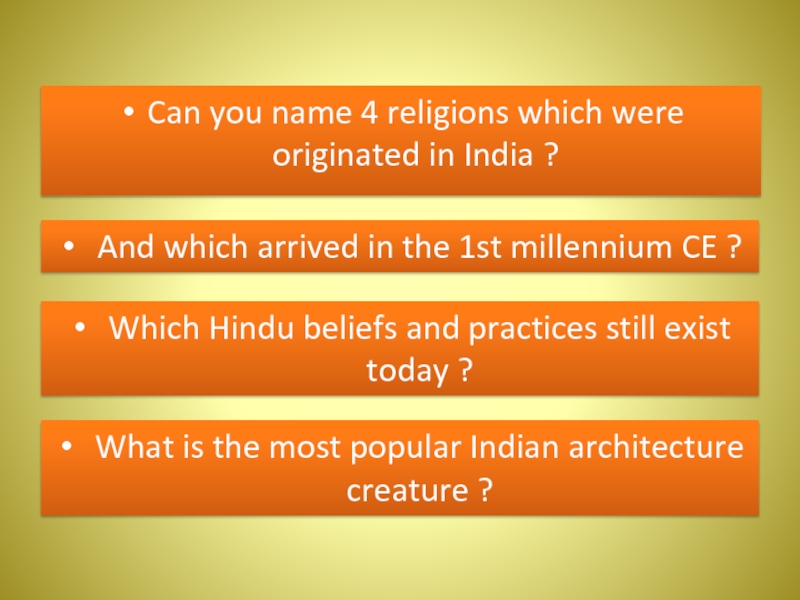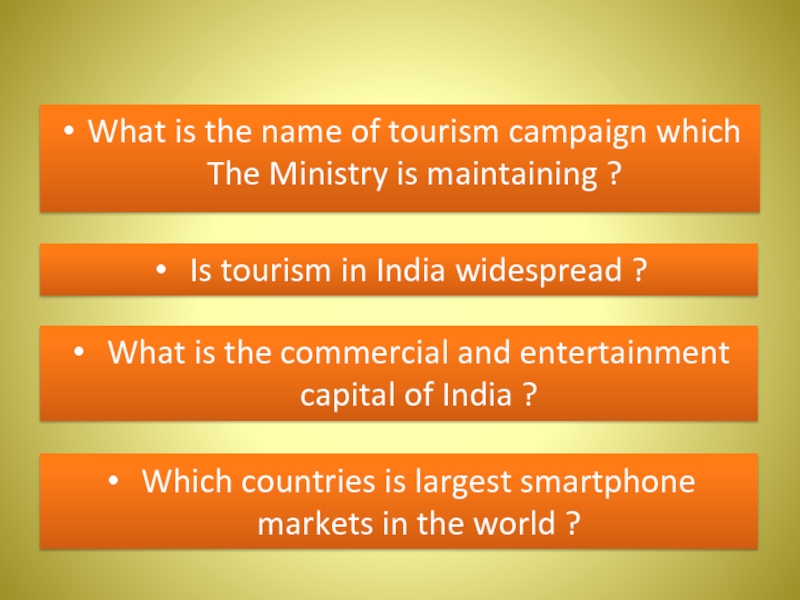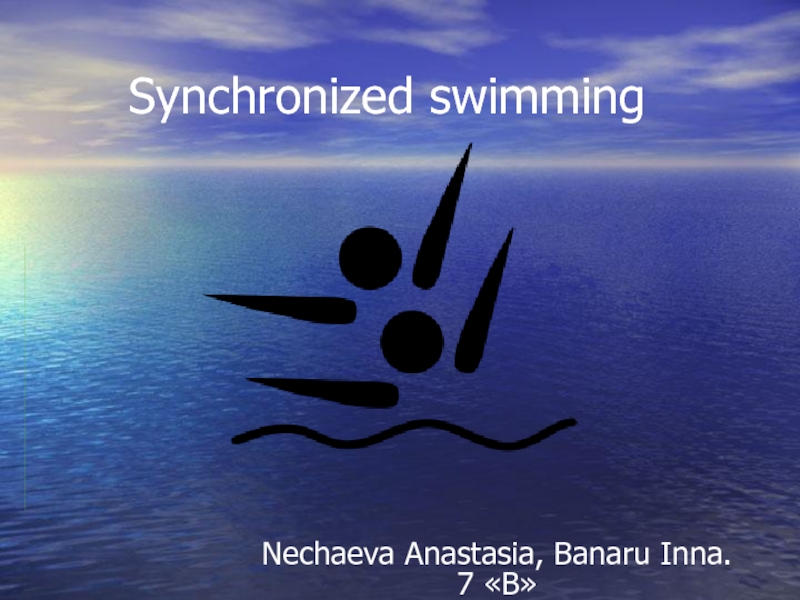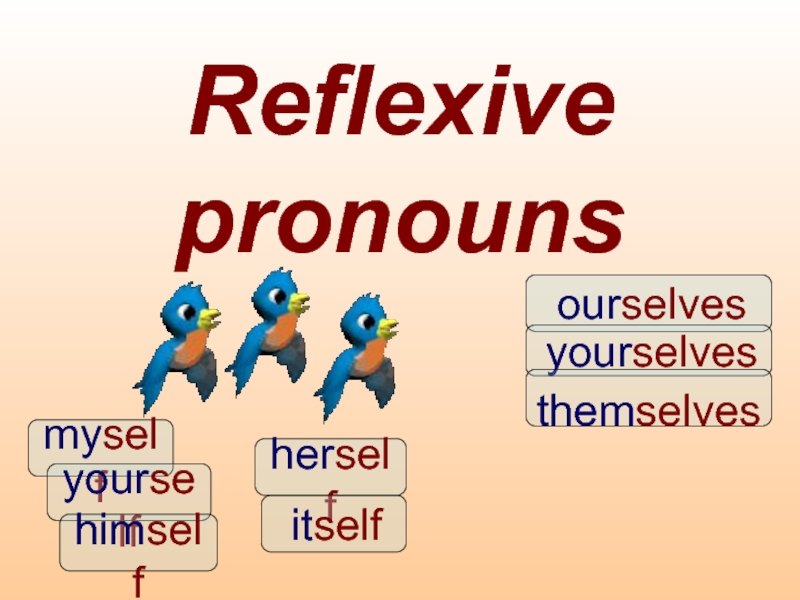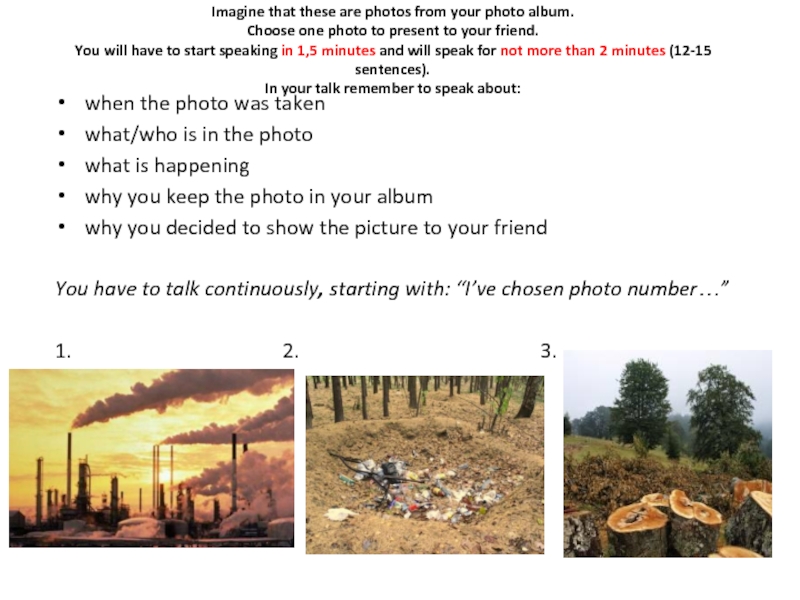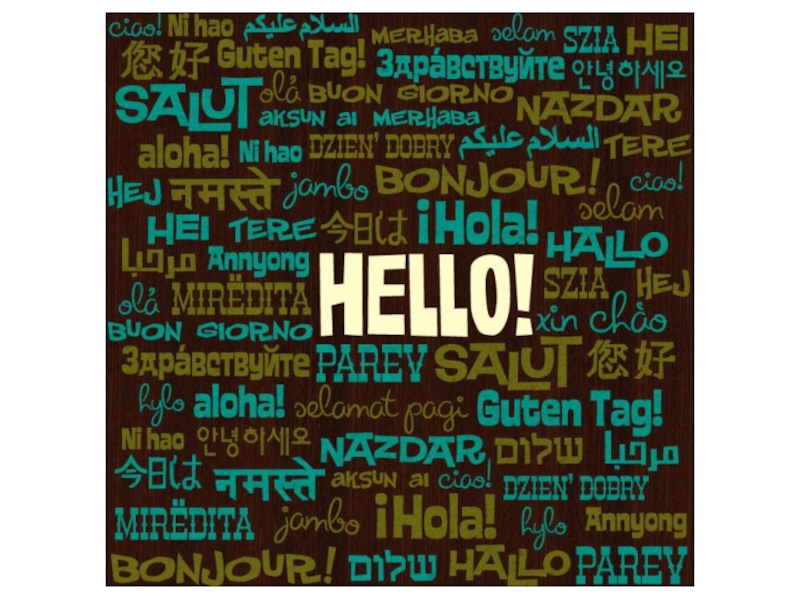- Главная
- Разное
- Дизайн
- Бизнес и предпринимательство
- Аналитика
- Образование
- Развлечения
- Красота и здоровье
- Финансы
- Государство
- Путешествия
- Спорт
- Недвижимость
- Армия
- Графика
- Культурология
- Еда и кулинария
- Лингвистика
- Английский язык
- Астрономия
- Алгебра
- Биология
- География
- Детские презентации
- Информатика
- История
- Литература
- Маркетинг
- Математика
- Медицина
- Менеджмент
- Музыка
- МХК
- Немецкий язык
- ОБЖ
- Обществознание
- Окружающий мир
- Педагогика
- Русский язык
- Технология
- Физика
- Философия
- Химия
- Шаблоны, картинки для презентаций
- Экология
- Экономика
- Юриспруденция
Republic of India презентация
Содержание
- 1. Republic of India
- 2. HISTORY Home to the ancient Indus Valley Civilisation and
- 3. Gradually annexed by and brought under
- 4. CULTURE Indian cultural history spans more than
- 5. Much of Indian architecture, including the Taj Mahal,
- 6. In India, several traditional indigenous sports
- 7. TOURISM The tourism industry of India is economically important and is growing rapidly.
- 8. The Ministry of Tourism designs national policies for
- 9. India's rich history and its cultural
- 10. ECONOMY Mumbai is the commercial and entertainment
- 11. India's telecommunication industry, the world's fastest-growing, added
- 12. Here is a short review about India:
- 13. Let’s see if you remember something from this presentation…
- 14. Can you name 4 religions which
- 15. What is the name of tourism
- 16. Thank you for your attention ! from Caroline with love
Слайд 2HISTORY
Home to the ancient Indus Valley Civilisation and a region of historic trade
Слайд 3
Gradually annexed by and brought under the administration of the British East
Слайд 4CULTURE
Indian cultural history spans more than 4,500 years. During the Vedic period (c. 1700
Слайд 5
Much of Indian architecture, including the Taj Mahal, other works of Mughal architecture, and South
Слайд 6
In India, several traditional indigenous sports remain fairly popular, such as kabaddi, kho
Слайд 8
The Ministry of Tourism designs national policies for the development and promotion of
Слайд 9
India's rich history and its cultural and geographical diversity make its
Слайд 10ECONOMY
Mumbai is the commercial and entertainment capital of India. It is
Слайд 11
India's telecommunication industry, the world's fastest-growing, added 227 million subscribers during the
Its automotive industry, the world's second fastest growing, increased domestic sales by 26% during 2009–10, and exports by 36% during 2008–09.Power capacity is 250 gigawatts, of which 8% is renewable. At the end of 2011,Indian IT Industry employed 2.8 million professionals, generated revenues close to US$100 billion equalling 7.5% of Indian GDP and contributed 26% of India's merchandise exports.
Слайд 14
Can you name 4 religions which were originated in India ?
And
Which Hindu beliefs and practices still exist today ?
What is the most popular Indian architecture creature ?
Слайд 15
What is the name of tourism campaign which The Ministry is
Is tourism in India widespread ?
What is the commercial and entertainment capital of India ?
Which countries is largest smartphone markets in the world ?
